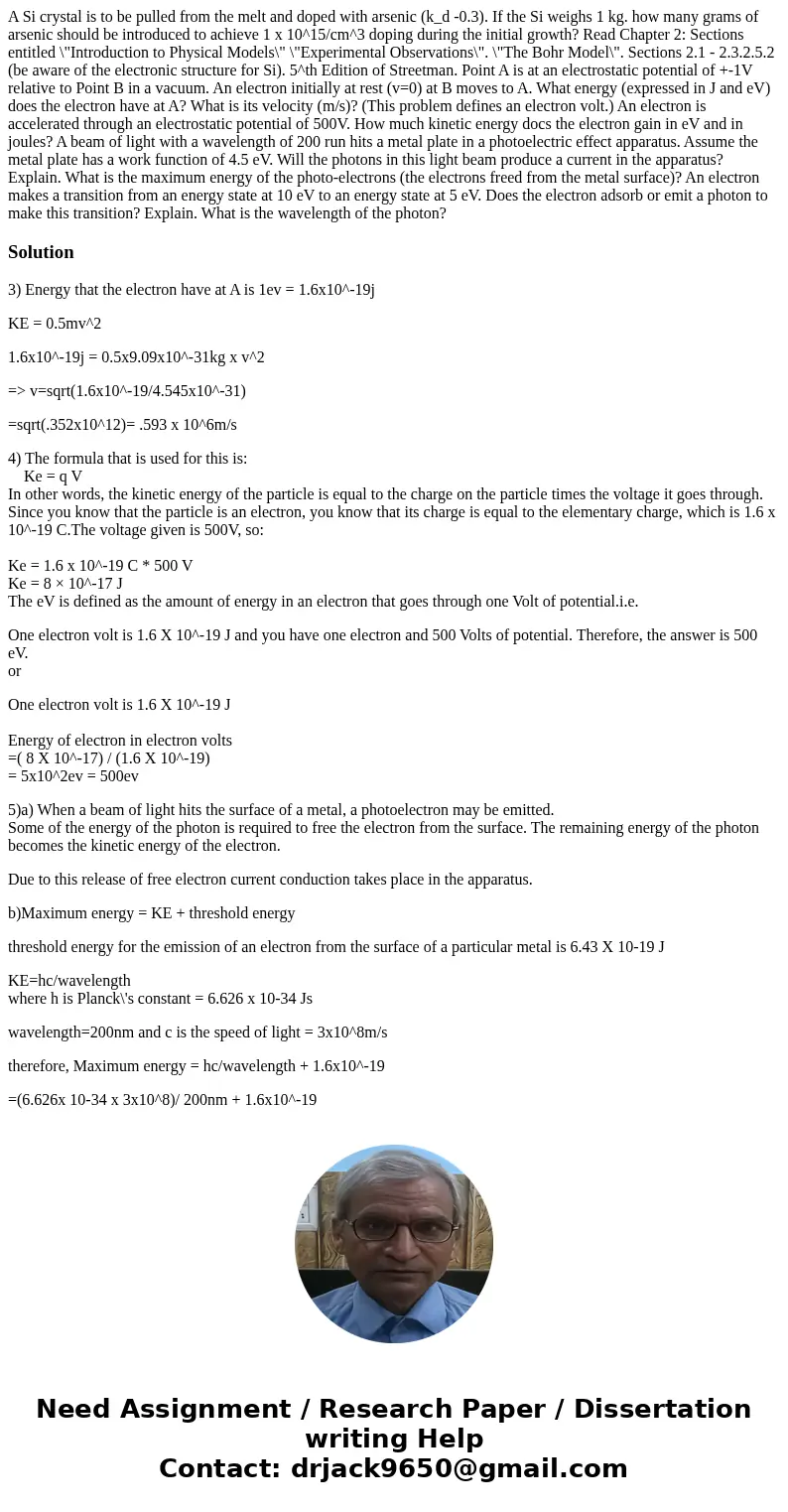A Si crystal is to be pulled from the melt and doped with ar
Solution
3) Energy that the electron have at A is 1ev = 1.6x10^-19j
KE = 0.5mv^2
1.6x10^-19j = 0.5x9.09x10^-31kg x v^2
=> v=sqrt(1.6x10^-19/4.545x10^-31)
=sqrt(.352x10^12)= .593 x 10^6m/s
4) The formula that is used for this is:
Ke = q V
In other words, the kinetic energy of the particle is equal to the charge on the particle times the voltage it goes through.
Since you know that the particle is an electron, you know that its charge is equal to the elementary charge, which is 1.6 x 10^-19 C.The voltage given is 500V, so:
Ke = 1.6 x 10^-19 C * 500 V
Ke = 8 × 10^-17 J
The eV is defined as the amount of energy in an electron that goes through one Volt of potential.i.e.
One electron volt is 1.6 X 10^-19 J and you have one electron and 500 Volts of potential. Therefore, the answer is 500 eV.
or
One electron volt is 1.6 X 10^-19 J
Energy of electron in electron volts
=( 8 X 10^-17) / (1.6 X 10^-19)
= 5x10^2ev = 500ev
5)a) When a beam of light hits the surface of a metal, a photoelectron may be emitted.
Some of the energy of the photon is required to free the electron from the surface. The remaining energy of the photon becomes the kinetic energy of the electron.
Due to this release of free electron current conduction takes place in the apparatus.
b)Maximum energy = KE + threshold energy
threshold energy for the emission of an electron from the surface of a particular metal is 6.43 X 10-19 J
KE=hc/wavelength
where h is Planck\'s constant = 6.626 x 10-34 Js
wavelength=200nm and c is the speed of light = 3x10^8m/s
therefore, Maximum energy = hc/wavelength + 1.6x10^-19
=(6.626x 10-34 x 3x10^8)/ 200nm + 1.6x10^-19
=11.539x10^-19j
6) a) when an electron travels from an an energy state at 10ev to an energy state at 5 ev it emits a photon because it is travelling from a higher energy state to a lower energy state.
b) 1/wavelength = RH x ((1/n1^2)-(1/n2^2))
Since (1/n1^2) should be bigger than (1/n2^2), we substitute in n=5 for n1, and n=10 for n2.
1/[(Rydberg constant for hydrogen)x((1/5^2)-(1/10^2))]
wavelength = 1/[(1.097x10^7)x((1/25) - (1/100))]
wavelength = 1/(3.291 x 10^5) m =0.303x10^-5m


 Homework Sourse
Homework Sourse